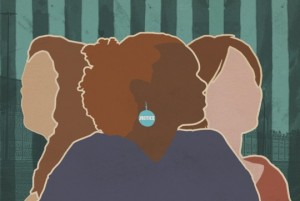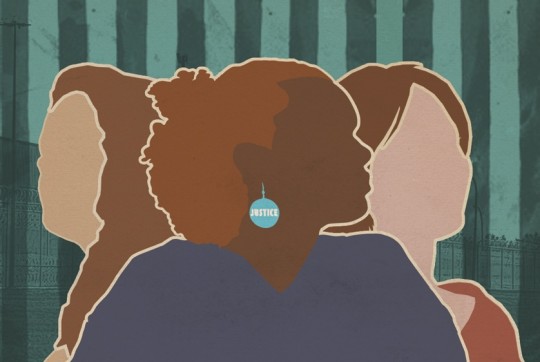 A pair of new scholarly articles say nominally neutral rules in the juvenile justice system can actually fail girls, especially, emphasizes one author, young women of color.
A pair of new scholarly articles say nominally neutral rules in the juvenile justice system can actually fail girls, especially, emphasizes one author, young women of color.
Discrimination is sort of hidden, said Professor Francine Sherman, director of the Juvenile Rights Advocacy Project at Boston College Law School and author of the paper “Justice for Girls: Are We Making Progress?”
“If there were laws on the books that said we’re going to do one thing for girls and another thing for boys, that would be challengeable” in court, she said. Instead, the discrimination is in practice, where “we do one thing for girls and one thing for boys.”
For example, in some states minors are still subject to criminal prostitution charges, a charge that disproportionately falls on females, and can make them less likely to run away from their exploiters.
Both Sherman and a colleague point out that girls are more likely than boys to be locked up for the status violation of running away.
“Most of the girls are running away from abuse,” said Jyoti Nanda, author of “Blind Discretion: Girls of Color and Delinquency in the Juvenile Justice System” and core faculty member in both the David J. Epstein Public Interest Law Program and the Critical Race Studies Program at the University of California Los Angeles School of Law. “Most of the homeless girls are victims of violence,” she said. “They’re less likely to run away just for the purpose of leaving,” and if they leave, it is a sign of something deeply wrong.
“There doesn’t seem to be an awareness on the part of any of the players [in the juvenile justice system] on what uniquely impacts the girls,” said Nanda. Girls’ brains develop earlier than boys’ do. So do their bodies, which can bring unwanted attention.
The key difficulty for Nanda is discretion—judges and law enforcement officers have great power over the fate of girls they encounter. The system was designed with good intentions, she said, recalling a time when wayward youths would be sent to parents with only a warning. But it doesn’t work like that, she said. Instead, a few people have unchecked power over each juvenile.
And in that wide space of discretion stereotypes are at work against females, Nanda argued — widespread cultural beliefs about women of various races.
“Why would juvenile justice system actors be immune from the same stereotypes we have?” she asked.
There’s data on distorted treatment of both black boys in the juvenile justice system and women of color in the adult system, but the combination of young, female and black is not well documented. Nanda said there is no discussion, no place to talk, write or think about girls of color in the system.
Yet her paper does cite studies that found examples of young women of color receiving harsher punishment for the same crime as white girls; and of probation officers perceiving white, Hispanic and black girls differently.
Jurisdictions would be eager to study gender distortions and incorporate them into their work, Sherman said, but it would mean looking critically at lots of decision data over time. “That’s a hard thing to do in the every day hustle and bustle,” she said.
There are resource and time constraints as well as a perception that there are more pressing things to focus on, Sherman argued, and called on the federal government to provide leadership and technical assistance to jurisdictions so they can gather and analyze their data.
But Sherman emphasized that she is optimistic. “We’re in a much better place now for young women in the system than we were a decade ago,” she said, pointing out that some jurisdictions have reduced overall detention of all youth and that decision-makers are making allowances for youths’ still-in-progress cognitive development and the effects of trauma on youth behavior. “But,” she continued, “this is the time to really push forward simply because we have a much better foundation with which to make these improvements.”
Nanda is not so optimistic. Because juvenile justice officials have so much discretion, she believes “leadership probably has to come from the juvenile court.” But she also pointed out that judges and lawyers of the future are unlikely to see law school offerings on race, juvenile criminal law and gender; much less the intersection of those.
The papers were presented for the UCLA Law Review’s 2012 symposium, Overpoliced and Underprotected: Women, Race, and Criminalization.
Photo from the UCLA Law Review.
